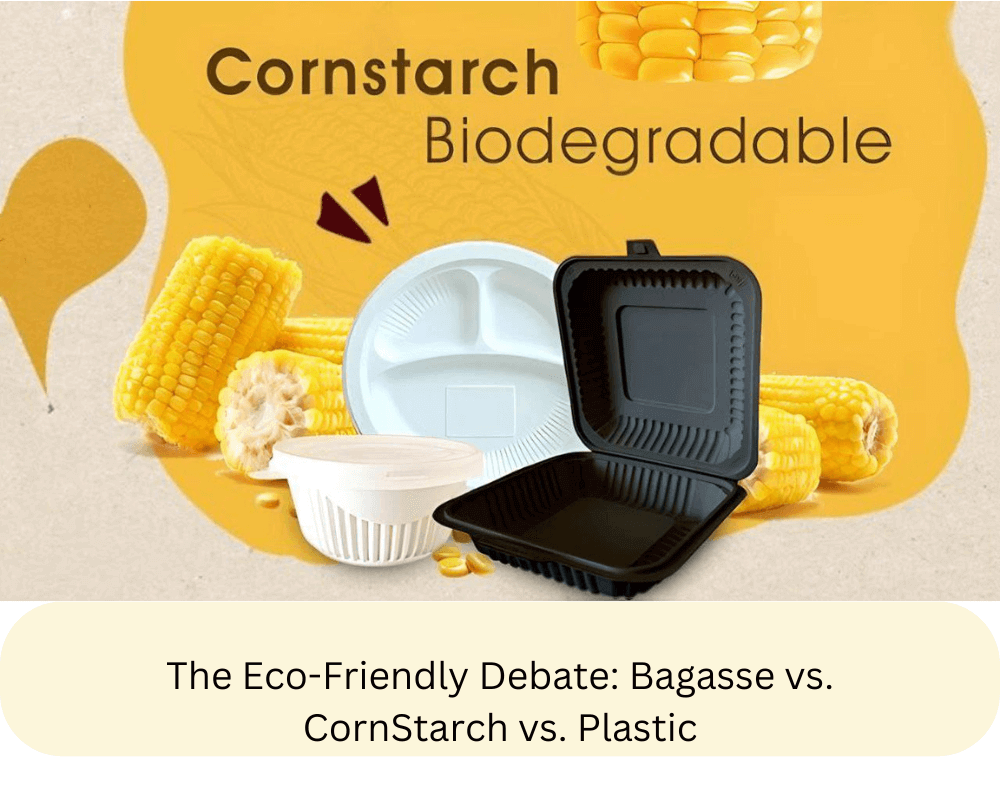The world is becoming aware of environmental sustainability, ecology, and eco-friendly materials and becoming more popular as well. Innovative materials such as corn starch and Bagasse are leading the world to eco-friendly alternatives to regular plastics. These elements offer sustainability and biodegradability but how are they different from plastic? Let’s go through the eco-friendly debate around Bagasse, corn starch, and plastics.
Bagasse
After crushing the stalks of sorghum and sugarcane and extracting the juice, the residue left over is called Bagasse. Bagasse is a natural origin that is renewable and abundant. The products of Bagasse, such as tableware and containers, are compostable and biodegradable making it an attractive option to plastics. Bagasse’s durability makes it the best option for events or picnics where people need heat-resistant and reliable tableware that is also good for the environment. Tableware Bagasse is constantly more broadly available and low cost because of the sufficient supply of sorghum and sugarcane waste. However, the manufacturing process for products of Bagasse can require important water and energy that can impact over on its sustainability.
Cornstarch
Products of cornstarch are created by processing corn starch into material of bioplastics, it is better known as polylactic acid (PLA). Cornstarch is biodegradable; it can be transformed into a polymer material that reduces the need for harmful regular plastics but still gives the durability and strength of regular plastics. Cornstarch is highly versatile and it can be utilized for different purposes such as toys, medical disposal, and automobile parts. Products of Cornstarch are long-lasting, it may need to control higher temperatures and more efficiently. Products of corn starch are rare and it is expensive due to the manufacturing process. Products of corn starch can be molded into various shapes and sizes, colored easily, and presenting various customized options. Products of corn starch are allowed for fun and creatively designed for special occasions and theme parties. However, cornstarch fabrication can be contested with food sources and the major concerns about its effect on food availability and prices.
Plastics
Plastics are derived from petroleum and it has long period a staple in manufacturing and packaging. Plastics are mostly used because of their sturdy, disposable, and low cost than glass tableware and traditional metal. Plastics can decompose after a few centuries, they are deduced for nonrenewable petrol and fossil fuels and the manufacturing process not only requests water and significant energy uses but also tries limited natural sources. Some of the plastics can recycle, but the challenge is to recycle the remaining plastics. However, their resistance and durability to reduction has given to environmental issues, such as loss of wildlife and pollution. Efforts to decrease plastics find and use sustainable choices have enhanced in recent years.
Both cornstarch and Bagasse offer optimistic eco friendly unconventional to regular plastics. Cornstarch is a material of bioplastics decomposable advantage while Bagasse is a product with possible sustainable benefits. However, the total impact on the environment depends on many factors, including waste management practices, methods of production, along with end of life disposal options. Finally, a global approach to improving waste management, sustainability and is essential to address the problem of pollution.


